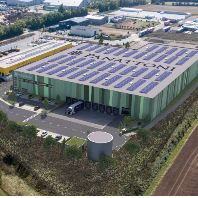ROZ/IPD measures the returns achieved on real properties and investment portfolios from December 1994 to December 2001.
For 2001 the Index comprises 6,704 assets with a combined value of € 38bn. It is estimated that the sample represents 85% of the value of the holdings of the financial institutions and quoted property companies in the Netherlands. In 2000, a Quarterly Market Estimation Service was developed for Dutch clients in the Netherlands and will be in the public domain from May 2001.
Last year saw a weakening in the performance of the Dutch property market, after an exceptionally strong run through 1999 and 2000. All property total returns slipped to 11.4% in 2001, from 16.1% in the previous year. Over the last seven years, the annualised rate of return of 13.1% represents a real return over inflation of 10.5%.
The immediate cause of last yearÂ's decline in returns was a less favourable movement in property yields. The all property gross initial yield had fallen from 7.8% at the end of 1997 to 6.6% at the end of 2000, boosting capital values by around 3-5% per year. Last year, however, the gross initial yield was virtually static, suggesting a more cautious mood among investors. As a result, despite a gentle acceleration in rental value growth to 4.5% in 2001, the annual increase in capital values halved to 5.1%, from 9.5% in the previous year.
Over the full seven years covered by the Index, residentials have been the star performer with returns of 14.5% per year, reflecting a relatively large fall in yields. Industrial and office total returns have been broadly similar at 12.2-12.6% per year as high rates of income return in the industrial sector have compensated for sluggish rental value growth. Retails have consistently under-performed the other sectors since 1997, due to relatively modest rental value growth and a more restrained fall in yields.
(source: ROZ/IPD)







